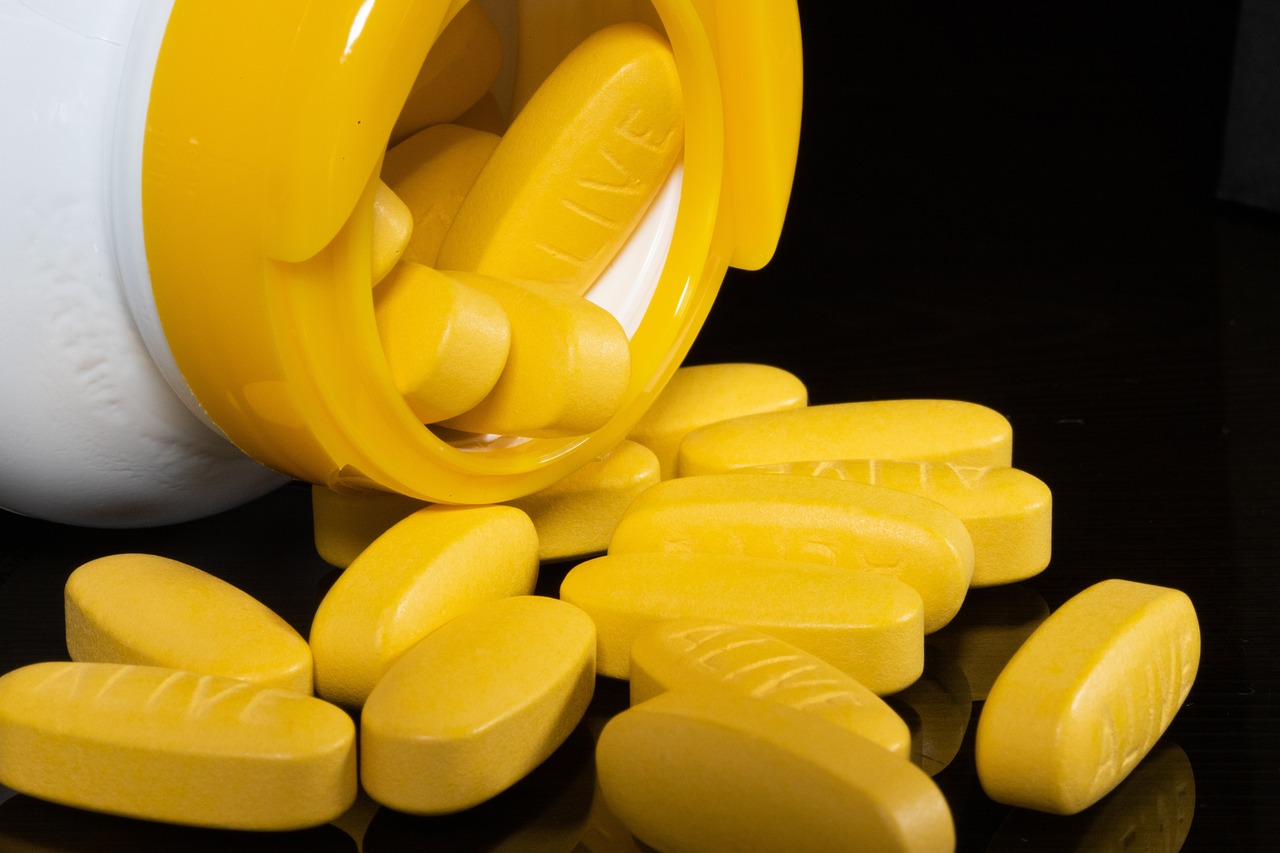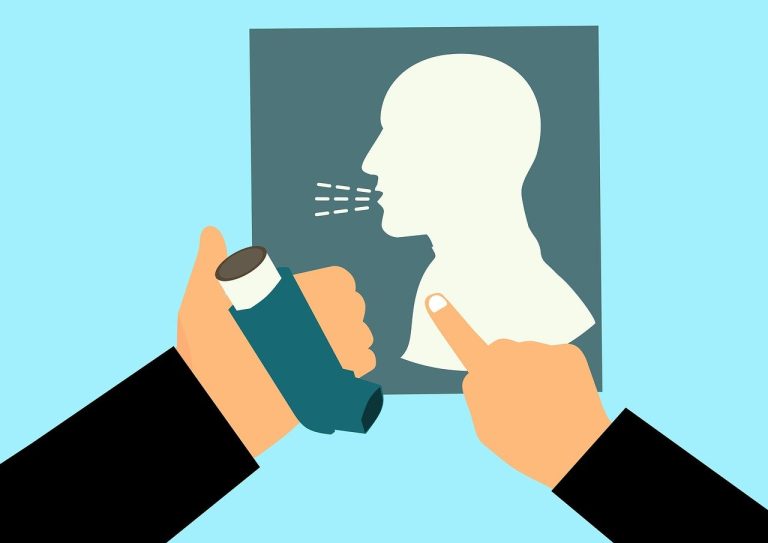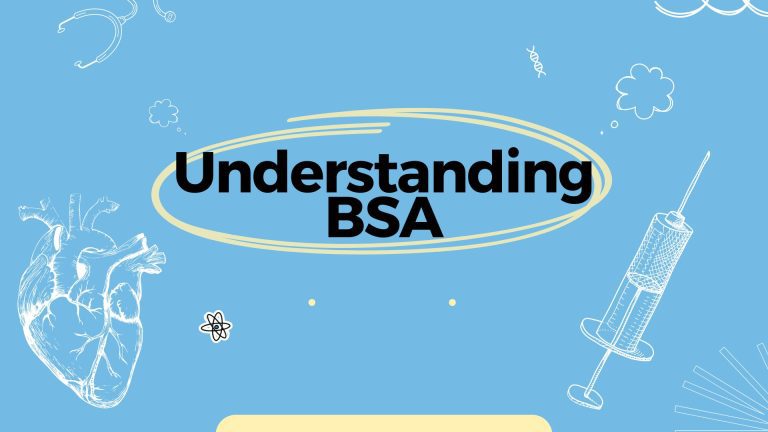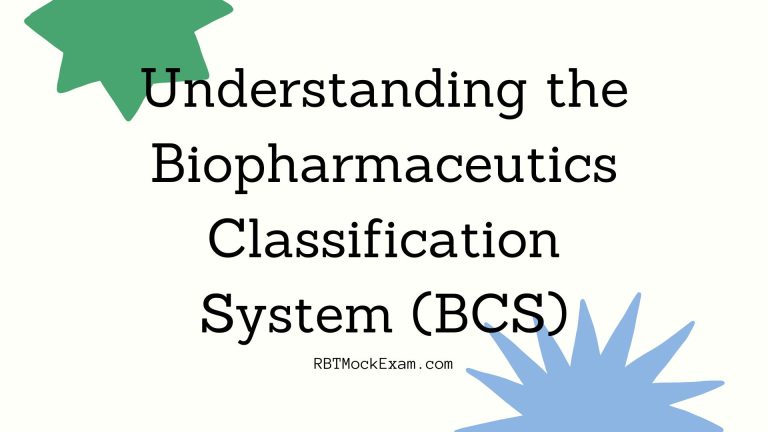Book Appointment Now

Guide to Parenteral Dosage Forms
Parenteral dosage forms play a crucial role in modern medicine. They offer an alternative to oral drug administration, particularly when a rapid onset of action is required or when the drug is poorly absorbed through the gastrointestinal tract.
The term “parenteral” originates from the Greek words “para” (beside) and “enteron” (intestine), indicating a route of administration that bypasses the digestive system.
This method of drug delivery is indispensable in emergency situations, critical care, and chronic disease management, where precise control over drug dosage and timing is essential.
Parenteral administration encompasses various routes, including intravenous (IV), intramuscular (IM), subcutaneous (SC), and intradermal (ID). Each route offers unique advantages and is chosen based on the specific therapeutic needs, the nature of the medication, and the patient’s condition.
For instance, intravenous administration provides immediate drug action, making it ideal for emergency interventions, while subcutaneous injections are often used for slow, sustained drug release.
Basics of Parenteral Administration
Parenteral administration refers to the delivery of drugs by routes other than the oral or alimentary canal. This method bypasses the digestive system, providing a direct pathway into the bloodstream or tissues, ensuring faster and more efficient drug action. The primary types of parenteral administration include:
- Intravenous (IV): Injection directly into the bloodstream, providing immediate drug effect.
- Intramuscular (IM): Injection into the muscle tissue, offering a slower release than IV but faster than subcutaneous.
- Subcutaneous (SC): Injection into the layer of fat beneath the skin, providing a sustained release of the drug.
- Intradermal (ID): Injection just under the epidermis, used mainly for sensitivity tests and vaccinations.
Advantages and Disadvantages of Parenteral Routes
Advantages:
- Rapid Onset of Action: Parenteral administration, especially IV, provides an immediate therapeutic effect, crucial in emergency situations.
- Bioavailability: Parenteral routes bypass the gastrointestinal tract, avoiding first-pass metabolism and ensuring 100% bioavailability of the drug.
- Precision: Allows precise control over drug dosage and timing, critical in intensive care and chronic disease management.
- Patient Compliance: Beneficial for patients who cannot take medications orally due to nausea, vomiting, or unconsciousness.
- Administration of Complex Drugs: Suitable for biologics, peptides, and proteins that are unstable or poorly absorbed orally.
Disadvantages:
- Invasiveness: Requires needles or catheters, which can cause discomfort and carry risks of infection.
- Cost: Generally more expensive due to the need for sterile equipment and trained personnel.
- Complexity: Requires specialized skills for administration, particularly for IV drugs.
- Complications: Potential for adverse reactions, such as phlebitis, tissue damage, and systemic infections.
- Storage and Stability: Parenteral drugs often require stringent storage conditions to maintain stability and sterility.
Common Routes of Parenteral Administration
Intravenous (IV)
- Definition: Injection directly into a vein, allowing for immediate drug action.
- Applications: Commonly used in emergencies, anesthesia, chemotherapy, and fluid replacement therapy.
- Advantages: Rapid onset, precise control over blood levels, and ability to administer large volumes.
- Disadvantages: Higher risk of infections, thrombosis, and requires continuous monitoring.
Intramuscular (IM)
- Definition: Injection into the muscle tissue, usually the deltoid, gluteus, or thigh muscles.
- Applications: Vaccinations, hormones, and antibiotics.
- Advantages: Faster absorption than SC, can administer larger volumes than SC.
- Disadvantages: Pain at the injection site, nerve damage risk, and absorption variability based on muscle mass and blood flow.
Subcutaneous (SC)
- Definition: Injection into the subcutaneous tissue, typically in the abdomen, thigh, or upper arm.
- Applications: Insulin, anticoagulants, and growth hormones.
- Advantages: Sustained and gradual absorption, lower risk of complications compared to IV.
- Disadvantages: Limited to small volumes, potential for irritation, and lipodystrophy at the injection site.
Intradermal (ID)
- Definition: Injection into the dermal layer just below the epidermis.
- Applications: Allergy tests, tuberculosis screening (Mantoux test), and certain vaccines.
- Advantages: High visibility of the injection site, minimal absorption into the bloodstream, suitable for diagnostic purposes.
- Disadvantages: Limited to small volumes, potential for local reactions and discomfort.
Types of Parenteral Dosage Forms
Parenteral dosage forms are designed to be sterile and free from particulate matter, ensuring safe bodily injection.
Solutions
Aqueous Solutions
- Definition: Clear, homogenous liquid preparations in which the drug is dissolved in water.
- Applications: Commonly used for intravenous, intramuscular, and subcutaneous injections.
- Advantages: Rapid absorption, ease of preparation, and minimal irritation at the injection site.
- Considerations: The stability and solubility of the drug, as well as the potential for microbial growth requiring preservatives.
Non-Aqueous Solutions
- Definition: Solutions where the solvent is not water but other substances like oils or alcohols.
- Applications: Used for drugs that are poorly soluble or unstable in water.
- Advantages: Provides an alternative for water-sensitive drugs, sustained release in some cases.
- Considerations: Risk of irritation or allergic reactions, compatibility with packaging materials.
Suspensions
- Definition: Heterogeneous systems where solid drug particles are dispersed in a liquid medium.
- Applications: Used for drugs that are insoluble or unstable in solution form.
- Advantages: It provides a prolonged drug release and is useful for depot injections.
- Considerations: Requires thorough shaking before use, potential for aggregation or sedimentation, and stability issues.
Types of Suspensions
- Aqueous Suspensions: Dispersions in water, used for immediate or sustained release.
- Non-Aqueous Suspensions: Dispersions in oil or other non-aqueous media, often for long-acting formulations.
Emulsions
- Definition: Mixtures of two immiscible liquids, where one is dispersed as droplets in the other.
- Applications: Typically used for parenteral nutrition and some drug delivery systems.
- Advantages: Ability to deliver lipophilic drugs, sustained release, and reduced irritation.
- Considerations: Stability issues such as phase separation, particle size control, and risk of embolism if not properly formulated.
Types of Emulsions
- Oil-in-Water (O/W) Emulsions: Oil droplets dispersed in an aqueous phase, common in intravenous fat emulsions.
- Water-in-Oil (W/O) Emulsions: Water droplets dispersed in an oil phase are less common in parenteral use.
Lyophilized (Freeze-Dried) Products
- Definition: Products that have been freeze-dried to remove water, resulting in a stable, dry powder.
- Applications: Used for drugs that are unstable in liquid form, requiring reconstitution before administration.
- Advantages: Enhanced stability and shelf-life, easy transport and storage, reduced risk of hydrolysis.
- Considerations: Requires proper reconstitution before use, risk of contamination during reconstitution, higher manufacturing costs.
Process of Lyophilization
- Freezing: The solution is frozen to form solid ice.
- Primary Drying: Sublimation of ice under low pressure to remove most of the water.
- Secondary Drying: Removal of residual moisture to ensure product stability.
Implants
- Definition: Solid dosage forms that are placed subcutaneously or intramuscularly, providing long-term drug release.
- Applications: Hormonal therapies, pain management, and chronic disease treatment.
- Advantages: Sustained release over extended periods, improved patient compliance, and reduced dosing frequency.
- Considerations: Implantation requires minor surgical procedures, there is the potential for local tissue reactions, and it is difficult to remove if needed.
Types of Implants
- Biodegradable Implants: Designed to break down in the body over time, eliminating the need for removal.
- Non-Biodegradable Implants: Requires surgical removal after the drug is depleted.
Formulation Considerations
Formulating parenteral dosage forms involves meticulous attention to detail to ensure safety, efficacy, and stability. This chapter will explore the critical factors that influence the formulation of parenteral products, including sterility, solubility, stability, and excipients.
Sterility and Aseptic Processing
- Importance of Sterility: To prevent infections, parenteral products must be free from microbial contamination. Sterility is paramount as these products bypass the body’s natural barriers.
- Methods of Sterilization:
- Heat Sterilization: Autoclaving or dry heat for heat-stable products.
- Filtration: Using sterile filters for heat-sensitive solutions.
- Radiation Sterilization: Gamma or electron beam for specific applications.
- Aseptic Processing: Maintaining sterility during the entire manufacturing process for products that cannot undergo terminal sterilization.
- Aseptic Techniques: Cleanroom environments, laminar flow hoods, and strict personnel hygiene to maintain sterile conditions.
Solubility and Stability of Drugs
- Solubility Enhancement:
- pH Adjustment: Modifying the pH to increase solubility of ionizable drugs.
- Use of Cosolvents: Adding solvents like ethanol or propylene glycol to improve solubility.
- Complexation: Using cyclodextrins or other agents to form soluble complexes with the drug.
- Stability Considerations:
- Chemical Stability: Preventing hydrolysis, oxidation, and photodegradation.
- Physical Stability: Avoiding precipitation, aggregation, and phase separation.
- Strategies for Enhancing Stability:
- Antioxidants: Adding agents like ascorbic acid to prevent oxidation.
- Chelating Agents: Using EDTA to bind metal ions that catalyze degradation.
- Buffer Systems: Maintaining a stable pH to enhance drug stability.
pH and Isotonicity
- pH Adjustment: Ensuring the solution’s pH is within the physiological range to prevent irritation and maintain drug stability.
- Isotonicity: Formulating solutions to be isotonic with body fluids to avoid discomfort and cellular damage upon injection.
- Use of Isotonic Agents: Sodium chloride, dextrose, and other agents to adjust osmolarity.
Use of Excipients
Excipients are vital in formulating parenteral products, enhancing stability, solubility, and patient comfort.
Preservatives
- Purpose: Prevent microbial growth in multi-dose vials and during storage.
- Common Preservatives: Benzyl alcohol, phenol, and parabens.
- Considerations: Potential for allergic reactions and compatibility with the active drug.
Buffers
- Purpose: Maintain the pH within a stable range to ensure drug stability and minimize irritation.
- Common Buffers: Phosphate, citrate, and acetate buffers.
- Considerations: Buffer capacity and compatibility with the active drug and other excipients.
Stabilizers
- Purpose: Enhance the chemical and physical stability of the drug.
- Types of Stabilizers:
- Antioxidants: Ascorbic acid, sodium metabisulfite.
- Chelating Agents: EDTA.
- Bulking Agents: Mannitol, used in lyophilized products to provide structure.
Packaging and Containers
- Vials: Widely used for single and multi-dose products, made of glass or plastic.
- Ampoules: Sealed glass containers, typically for single-use applications.
- Pre-filled Syringes: Provide convenience and reduce the risk of contamination.
- Considerations:
- Material Compatibility: Ensuring the drug does not interact with the container material.
- Sterility Maintenance: Ensuring the packaging maintains sterility until the point of use.
- Container Closure Integrity: Preventing contamination and maintaining product stability.
Manufacturing of Parenteral Products
Manufacturing parenteral products is a highly specialized process requiring stringent control measures to ensure sterility, safety, and efficacy.
Key Steps in Manufacturing
Formulation Development
- Pre-formulation Studies: Assessing the physical and chemical properties of the drug.
- Formulation Design: Developing the optimal formulation, including selecting excipients and solvents.
- Sterility Assurance: Incorporating aseptic techniques and sterilization methods from the outset.
Compounding
- Solution Preparation: Dissolving the active pharmaceutical ingredient (API) and excipients in the chosen solvent.
- Suspension Preparation: Dispersing the API in the liquid medium with the aid of surfactants and stabilizers.
- Emulsion Preparation: Creating a stable mixture of immiscible liquids, often involving high-shear mixing.
Filtration and Sterilization
- Filtration: Removing particulate matter using sterile filters with pore sizes typically 0.22 microns or smaller.
- Sterilization: Applying heat, filtration, or radiation to achieve sterility. For heat-sensitive products, sterile filtration and aseptic processing are crucial.
Filling and Sealing
- Aseptic Filling: Transferring the sterile product into sterile containers under aseptic conditions.
- Sealing: Ensuring airtight sealing of containers, such as capping vials or sealing ampoules, to maintain sterility.
Lyophilization (for freeze-dried products)
- Freezing: Rapidly freezing the product to form solid ice.
- Primary Drying: Sublimating ice under low pressure removes most water.
- Secondary Drying: Removing residual moisture to ensure product stability.
- Sealing: Sealing the containers under vacuum or inert gas to prevent moisture ingress.
Equipment Used in Production
Compounding Equipment
- Mixing Tanks: Stainless steel tanks with agitators for solution and suspension preparation.
- Homogenizers: High-pressure devices for creating emulsions and reducing particle size.
Filtration Equipment
- Sterile Filters: Membrane filters for removing particulates and ensuring sterility.
- Filter Integrity Testers: Equipment to test the integrity of sterile filters before and after use.
Filling and Sealing Equipment
- Filling Machines: Automated systems for accurate and sterile filling of vials, ampoules, and syringes.
- Sealing Machines: Equipment for capping vials, sealing ampoules, and attaching syringe plungers.
Lyophilization Equipment
- Lyophilizers (Freeze Dryers): Machines controlling temperature and pressure for lyophilization.
Quality Control Measures
Sterility Testing
- Purpose: Ensuring the product is free from viable microorganisms.
- Methods: Membrane filtration or direct inoculation, followed by incubation and observation for microbial growth.
Endotoxin Testing
- Purpose: Detecting bacterial endotoxins that can cause severe reactions.
- Methods: Limulus Amebocyte Lysate (LAL) assay, which uses an enzyme from horseshoe crab blood that reacts with endotoxins.
Particulate Matter Testing
- Purpose: Ensuring the absence of particulate contamination.
- Methods: Light obscuration particle count test and microscopic particle count test.
Other Quality Control Tests
- pH Testing: Ensuring the product’s pH is within the specified range.
- Osmolality Testing: Verifying that the product is isotonic with body fluids.
- Stability Testing: Assessing the product’s stability over time under various environmental conditions.
Regulatory and Quality Assurance Aspects
The safety, efficacy, and quality of parenteral products are governed by a framework of regulatory guidelines and quality assurance practices.
Good Manufacturing Practices (GMP)
- Definition: GMP are regulations that describe the methods, equipment, facilities, and controls required for producing pharmaceutical products.
- Purpose: Ensuring products are consistently produced and controlled according to quality standards.
- Key Principles:
- Quality Management: Establishing a system to ensure quality at every production stage.
- Sanitation and Hygiene: Maintaining a clean and hygienic manufacturing environment.
- Building and Facilities: Designing facilities to prevent contamination and cross-contamination.
- Equipment: Using appropriate, validated, and regularly maintained equipment.
- Raw Materials: Sourcing high-quality raw materials and components.
- Personnel: Training and qualifying personnel involved in production and quality control.
- Documentation: Keeping detailed records of every aspect of the manufacturing process.
Regulatory Requirements by Region
- United States (FDA):
- 21 CFR Part 211: Regulations on current GMP for finished pharmaceuticals.
- New Drug Application (NDA): Detailed submission required for new drugs, including data from clinical trials.
- Abbreviated New Drug Application (ANDA): Submission for generic drugs demonstrating bioequivalence to the brand-name counterpart.
- European Union (EMA):
- EudraLex Volume 4: Guidelines for GMP in the EU.
- Marketing Authorization Application (MAA): Required for approval to market a new drug in the EU.
- Directive 2001/83/EC: Community code relating to medicinal products for human use.
- Other Regions: Each country has its regulatory body and specific requirements, such as the Pharmaceuticals and Medical Devices Agency (PMDA) in Japan and Health Canada.
Documentation and Record-Keeping
- Batch Records: Detailed records of each production batch, including raw materials used, production steps, and quality control results.
- Standard Operating Procedures (SOPs): Documented procedures for every significant operation in the manufacturing process.
- Validation Protocols: Documents detailing the validation of equipment, processes, and methods to ensure they meet predefined criteria.
- Change Control: Procedures for managing manufacturing process, equipment, or materials changes.
- Training Records: Documentation of training provided to personnel, ensuring they are qualified for their roles.
Inspections and Compliance
- Regulatory Inspections:
- FDA Inspections: Regular inspections by the FDA to ensure compliance with GMP.
- EMA Inspections: Inspections by the EMA or national competent authorities in the EU.
- Other Regulatory Inspections: Similar inspections by regulatory bodies in other regions.
- Internal Audits: Regular internal audits to ensure ongoing compliance with GMP and regulatory requirements.
- Compliance Strategies:
- Corrective and Preventive Actions (CAPA): Identifying and addressing deviations from established procedures.
- Risk Management: Assessing and mitigating risks associated with the manufacturing process.
- Continuous Improvement: Implementing improvements based on audit findings and regulatory updates.
Regulatory Submissions and Approvals
- Investigational New Drug (IND) Application: Required in the U.S. before beginning clinical trials of a new drug.
- Clinical Trial Applications (CTA): Submissions are required in various regions before conducting clinical trials.
- Marketing Authorization: The process of obtaining approval to market a new drug, including providing comprehensive data on the drug’s safety, efficacy, and quality.
- Post-Marketing Surveillance: Ongoing monitoring of a drug’s safety and efficacy after it has been approved and marketed.
Clinical Applications and Case Studies
Parenteral dosage forms are critical in various clinical scenarios due to their ability to deliver drugs directly into the bloodstream or tissues, ensuring rapid and precise therapeutic effects.
Clinical Applications
Antibiotics
- Application: Treatment of severe infections where oral administration is not feasible or effective.
- Examples:
- Vancomycin: Used for MRSA infections, administered intravenously for systemic effect.
- Ceftriaxone: Broad-spectrum antibiotic given intravenously or intramuscularly for bacterial infections.
Chemotherapy Agents
- Application: Treatment of various cancers where precise dosing and rapid action are required.
- Examples:
- Doxorubicin: Administered intravenously to treat breast cancer, lymphoma, and leukemia.
- Cisplatin: Used for bladder, ovarian, and testicular cancers, given intravenously.
Biologics
- Application: Treatment of chronic diseases like rheumatoid arthritis, Crohn’s disease, and psoriasis.
- Examples:
- Adalimumab: Subcutaneous injection for autoimmune diseases.
- Infliximab: Intravenous infusion for inflammatory bowel disease and rheumatoid arthritis.
Vaccines
- Application: Immunization against infectious diseases.
- Examples:
- Influenza Vaccine: Administered intramuscularly or intradermally to prevent seasonal flu.
- COVID-19 Vaccines: mRNA vaccines given intramuscularly for rapid immunization.
Case Studies
Case Study 1: Sepsis Management with Intravenous Antibiotics
- Patient Profile: 65-year-old male with a history of diabetes and chronic kidney disease, presenting with high fever, chills, and hypotension.
- Intervention: Immediate administration of broad-spectrum intravenous antibiotics (e.g., ceftriaxone) in the emergency department.
- Outcome: Rapid improvement in clinical symptoms, stabilization of vital signs, and eventual resolution of infection.
- Discussion: This case highlights the critical role of intravenous antibiotics in managing life-threatening infections like sepsis, where rapid and effective treatment is crucial.
Case Study 2: Chemotherapy for Breast Cancer
- Patient Profile: 50-year-old female diagnosed with stage II breast cancer.
- Intervention: Chemotherapy regimen including intravenous doxorubicin and cyclophosphamide.
- Outcome: Significant reduction in tumor size, allowing for successful surgical resection and subsequent radiation therapy.
- Discussion: The case demonstrates the importance of intravenous chemotherapy in shrinking tumors before surgery, enhancing the chances of successful treatment.
Case Study 3: Biologic Therapy for Rheumatoid Arthritis
- Patient Profile: 45-year-old female with severe rheumatoid arthritis unresponsive to traditional DMARDs (Disease-Modifying Antirheumatic Drugs).
- Intervention: Subcutaneous administration of adalimumab every two weeks.
- Outcome: Marked improvement in joint pain and swelling, improved mobility, and enhanced quality of life.
- Discussion: This case underscores the effectiveness of biologic therapies in managing chronic autoimmune conditions, providing relief when conventional treatments fail.
Case Study 4: Vaccination Campaign for Influenza
- Patient Profile: Community-wide vaccination drive targeting high-risk groups, including the elderly and healthcare workers.
- Intervention: Mass administration of the intramuscular influenza vaccine.
- Outcome: Significant reduction in influenza cases and related complications during the flu season.
- Discussion: This case study illustrates the impact of parenteral vaccines in preventing infectious diseases and protecting vulnerable populations.
Future Trends in Parenteral Dosage Forms
The field of parenteral drug delivery is continuously evolving, driven by advancements in technology, materials science, and our understanding of disease mechanisms.
Innovations in Drug Delivery Systems
Nanotechnology
- Definition: The use of nanoparticles to improve drug delivery.
- Applications: Enhanced targeting of drugs to specific tissues or cells, reducing side effects and improving therapeutic outcomes.
- Examples:
- Liposomes: Nanocarriers that encapsulate drugs, protecting them from degradation and improving delivery to cancer cells.
- Dendrimers: Branched macromolecules that can carry multiple drug molecules, enhancing solubility and bioavailability.
- Future Prospects: Continued development of smart nanoparticles that can release drugs in response to specific biological triggers.
Biodegradable Polymers
- Definition: Polymers that break down in the body, releasing the drug over time.
- Applications: Controlled release implants and microspheres for long-term drug delivery.
- Examples:
- PLGA (Poly(lactic-co-glycolic acid)) Microspheres: Used for sustained release of hormones and vaccines.
- Biodegradable Stents: Deliver drugs locally to prevent restenosis in blood vessels.
- Future Prospects: Development of new polymers with improved biocompatibility and tailored degradation rates.
Hydrogels
- Definition: Network of hydrophilic polymers that can retain large amounts of water, used as drug carriers.
- Applications: Injectable hydrogels for localized and sustained drug release.
- Examples:
- In situ-forming Hydrogels: Polymers that gel upon injection, forming a depot for sustained drug release.
- Future Prospects: Smart hydrogels that respond to environmental changes (pH, temperature) for on-demand drug release.
Advances in Biologics and Biosimilars
Monoclonal Antibodies
- Definition: Antibodies engineered to target specific antigens.
- Applications: Treatment of cancer, autoimmune diseases, and infectious diseases.
- Examples:
- Pembrolizumab: Immune checkpoint inhibitor used in cancer therapy.
- Future Prospects: Development of bispecific antibodies that can engage two different targets simultaneously.
Gene Therapy
- Definition: Delivery of genetic material to modify or correct defective genes.
- Applications: Treatment of genetic disorders, cancers, and viral infections.
- Examples:
- AAV (Adeno-associated virus) Vectors: Used for delivering therapeutic genes.
- Future Prospects: Advances in CRISPR technology for precise gene editing and treatment of a broader range of diseases.
mRNA Vaccines
- Definition: Vaccines that use messenger RNA to instruct cells to produce a protein that elicits an immune response.
- Applications: Rapid development of vaccines for infectious diseases.
- Examples:
- COVID-19 Vaccines (e.g., Pfizer-BioNTech, Moderna): Demonstrated the potential of mRNA technology.
- Future Prospects: Expansion of mRNA technology to vaccines for other infectious diseases and personalized cancer vaccines.
Personalized Medicine and Parenteral Forms
Tailored Therapies
- Definition: Customizing treatment based on the patient’s genetic profile and disease characteristics.
- Applications: Optimizing drug efficacy and minimizing side effects.
- Examples:
- Pharmacogenomics: Using genetic information to predict drug response and tailor dosages.
- Future Prospects: Integration of AI and machine learning to analyze patient data and design individualized treatment regimens.
On-Demand Drug Delivery
- Definition: Systems that release drugs in response to specific physiological triggers.
- Applications: Managing chronic diseases with fluctuating conditions, such as diabetes and epilepsy.
- Examples:
- Closed-loop Insulin Delivery Systems: Automatically adjust insulin delivery based on real-time glucose levels.
- Future Prospects: Development of more sophisticated on-demand systems for a variety of conditions.
7.4 Nanotechnology in Parenteral Drug Delivery
Targeted Delivery Systems
- Definition: Nanoparticles designed to deliver drugs directly to diseased cells or tissues.
- Applications: Minimizing side effects and improving therapeutic efficacy in cancer treatment.
- Examples:
- Gold Nanoparticles: Used for targeted delivery of chemotherapeutic agents.
- Future Prospects: Personalized nanomedicine approaches that use patient-specific data to design nanoparticles.
Multifunctional Nanocarriers
- Definition: Nanocarriers that can perform multiple functions, such as targeting, imaging, and therapy.
- Applications: Real-time monitoring of drug delivery and therapeutic effects.
- Examples:
- Magnetic Nanoparticles: Used for targeted drug delivery and as contrast agents in imaging.
- Future Prospects: Development of nanocarriers with integrated diagnostic and therapeutic capabilities (theranostics).
References
- Allen, L. V., Popovich, N. G., & Ansel, H. C. (2021). Ansel’s Pharmaceutical Dosage Forms and Drug Delivery Systems (11th ed.). Wolters Kluwer.
- A comprehensive textbook detailing the principles and practices of pharmaceutical dosage forms, including parenteral systems.
- FDA. (2023). Guidance for Industry: Sterile Drug Products Produced by Aseptic Processing – Current Good Manufacturing Practice. U.S. Food and Drug Administration.
- EMA. (2021). Guideline on the Sterilisation of the Medicinal Product, Active Substance, Excipient and Primary Container. European Medicines Agency.
- Available at: EMA Guideline
- Guidelines on sterilization practices for pharmaceutical products in the European Union.
- Chowdary, K. P. R., & Shobharani, J. (2015). “Recent Advances in Novel Drug Delivery Systems”. Research Journal of Pharmaceutical, Biological and Chemical Sciences, 6(3), 1121-1131.
- An overview of recent advancements in drug delivery technologies, including parenteral systems.
- Wermeling, D. P., Record, K. A., & Pearson, R. (2017). “Parenteral Drug Delivery Systems”. In A. K. Mitra (Ed.), Drug Delivery Systems (2nd ed.). CRC Press.
- A chapter focuses on the design, development, and regulatory aspects of parenteral drug delivery systems.
- Drazen, J. M., & Yarchoan, R. (2020). “Clinical Applications of Parenteral Dosage Forms”. New England Journal of Medicine, 382, 1234-1240.
- A review of the clinical use of parenteral dosage forms in treating various diseases.
- International Conference on Harmonisation (ICH). (2019). ICH Q8 (R2) Pharmaceutical Development. ICH Harmonised Tripartite Guideline.
- Frokjaer, S., & Otzen, D. E. (2015). “Protein Drug Stability: A Formulation Challenge”. Nature Reviews Drug Discovery, 4(4), 298-306.
- A review article discusses protein drug stability challenges and formulation strategies to address them.
- Kearney, A. S., & Crawford, L. F. (2018). “Quality by Design in the Manufacturing of Parenteral Products”. Journal of Pharmaceutical Sciences, 107(6), 1355-1363.
- An article on the application of quality by design (QbD) principles in the manufacturing of parenteral dosage forms.
- Basu, S., & Bhattacharyya, C. (2016). “Nanotechnology in Drug Delivery: An Overview”. Journal of Drug Delivery Science and Technology, 35, 212-219.
- An overview of the role of nanotechnology in modern drug delivery systems, with a focus on parenteral applications.
- A detailed guide on the FDA’s expectations for sterile drug manufacturing and aseptic processing.
- Guidelines on pharmaceutical development and quality assurance practices.

Founder of the PTCBFreePracticeTest.com.



